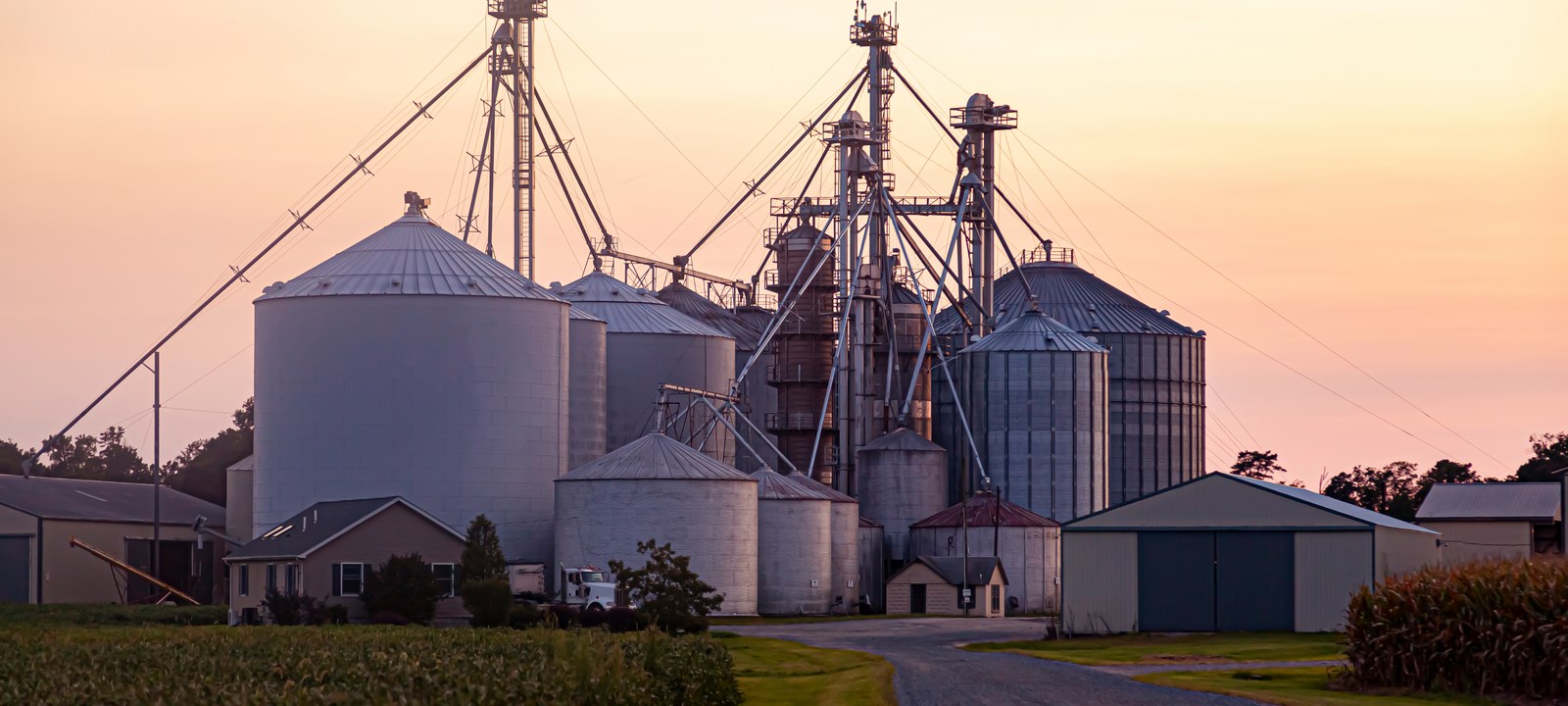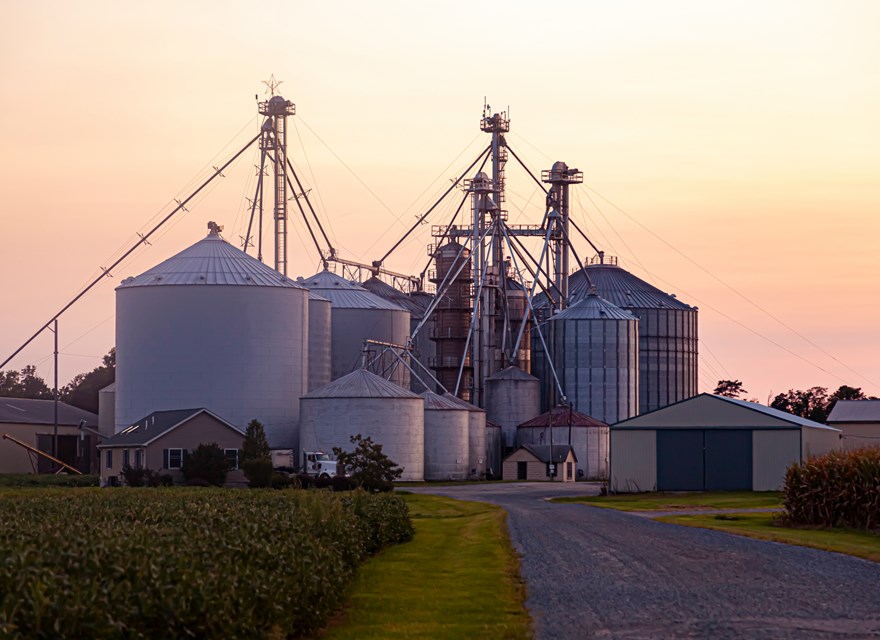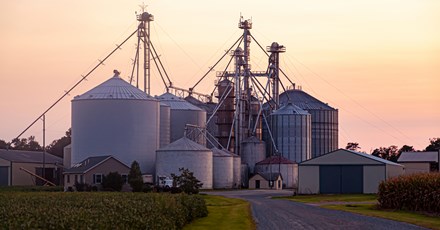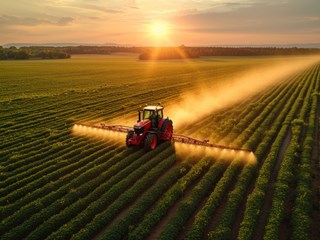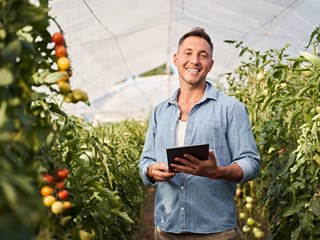juni 27, 2024
Understanding the full scope of the agriculture value chain is not for the faint of heart. It's one of the most critical value chains on the planet — and one of the most complex. If you're a processor in the middle of that web, you want to work with partners who truly understand what makes the agricultural value chain tick.
At Valtech, we've worked with that value chain from top to bottom. We understand the vital role that processors like you play in keeping the food, fuel, feed and fiber supply moving. And we've worked with clients on both sides of your business, from growers to retailers and CPGs.
Here are two examples of work we've done throughout the agriculture value chain to streamline it, improve it and identify more growth opportunities.
Developing a data win-win for both processors and growers
Storage infrastructure has always been important in agriculture, but especially during turbulent market conditions.
Our client, a large company that sells grain bins and silos to farmers, was solving an important problem: Growers need to be able to hang on to and store their grain for potentially long periods of time so they can wait for the right time in the market to sell.
With markets fluctuating rapidly in recent years, timing is everything. If it’s going to be a bad year for grain, growers need to be able to hold onto their grain for as long as possible because prices rise as supply reduces. Likewise, if prices are high they need to be able to sell quickly to take advantage of the hot market.
In either instance, data plays a key role in decision-making. How much grain do growers have in storage at any given time? At what time points do they move that grain out of the silo and sell?
Collecting, storing and analyzing that data can help improve decision-making at every stop along the value chain.
The solution
The grain storage company used IoT sensors inside their silos to measure how much grain was in each at any point in time. This information gave growers a better (and real-time) understanding of how much grain was in their bins. This way, they didn’t have to physically travel to check the levels themselves.
We saw the opportunity in all this data — if it could be harnessed and appropriately leveraged.
As with most information, this data could serve dual purposes. Could all of that grain bin data be monetized or sold to generate additional revenue?
For example, access to grain storage data could help processors make better buying decisions. If they know it’s going to be a tough year for corn prices and they want to buy the commodity for as little as possible, this type of data could help them make purchasing decisions at the right time.
But as we dove into this opportunity, it was important to stay cognizant of potential concerns: How could growers’ privacy be maintained? What would sharing this data mean for them? How do we build that pathway while keeping it a win-win for both growers and others along the value chain?
This led to the larger question we had to answer:
What kind of incentive would growers need to voluntarily provide this data?
And on the flip side, if the processors could potentially save money on purchases down the line, how much would they pay for that data now? There was an important value exchange to consider.
The result
Our experts helped the grain storage company determine a strategy for their grain bin data. This included determining the optimal price to charge processors for access to critical grain data. And grain growers would receive a new revenue stream by getting a check for their data contributions, if they opted in. We also ensured individual growers’ data was kept anonymized and aggregated to ensure privacy.
That flow of data became a win-win for the entire value chain.
Streamlining distributors’ ordering platforms
On the other end of the value chain, Valtech also has experience working in digital infrastructure that ties back to the end customer, the consumer.
If you’re an agriculture processor in the food retail value chain, there’s a lot that you depend on, from the supply of commodities coming from farmers to pricing in the market and smooth shipping logistics.
You also depend on your food retail clients continuing to make purchases, which depends on their customers continuing to make purchases. Your business at least partially relies on how reliable that food retailer or CPG’s ordering platform is. If that company’s system experiences lags or downtime, they could potentially lose business.
And if they lose business, you lose business.
The solution
Valtech worked with this distribution company to develop a new ordering application. With new digital infrastructure in place (via Google Cloud Platform), the company’s approximately 100,000 customers (including schools, hospitals and restaurants) could more easily and consistently submit their orders.
The result
There was less downtime and fewer glitches in the app, meaning fewer lost sales opportunities. Consistency in one part of the value chain will trickle both up and down to other pieces of the value chain.
When a customer can smoothly place orders with their distributor, that distributor can have a more solid idea of when and how much to purchase from processors.
And when processors can count on those regular orders from their clients, they can more consistently purchase from growers.
In a value chain with so many fluctuations (market prices, transportation snags, weather, etc.), it’s a domino effect of reliability. This stability ultimately strengthens the entire supply chain, ensuring every link is better equipped to handle the inherent uncertainties of the market.
Learn more
You can find more client case studies like these on our Agriculture vertical page.
